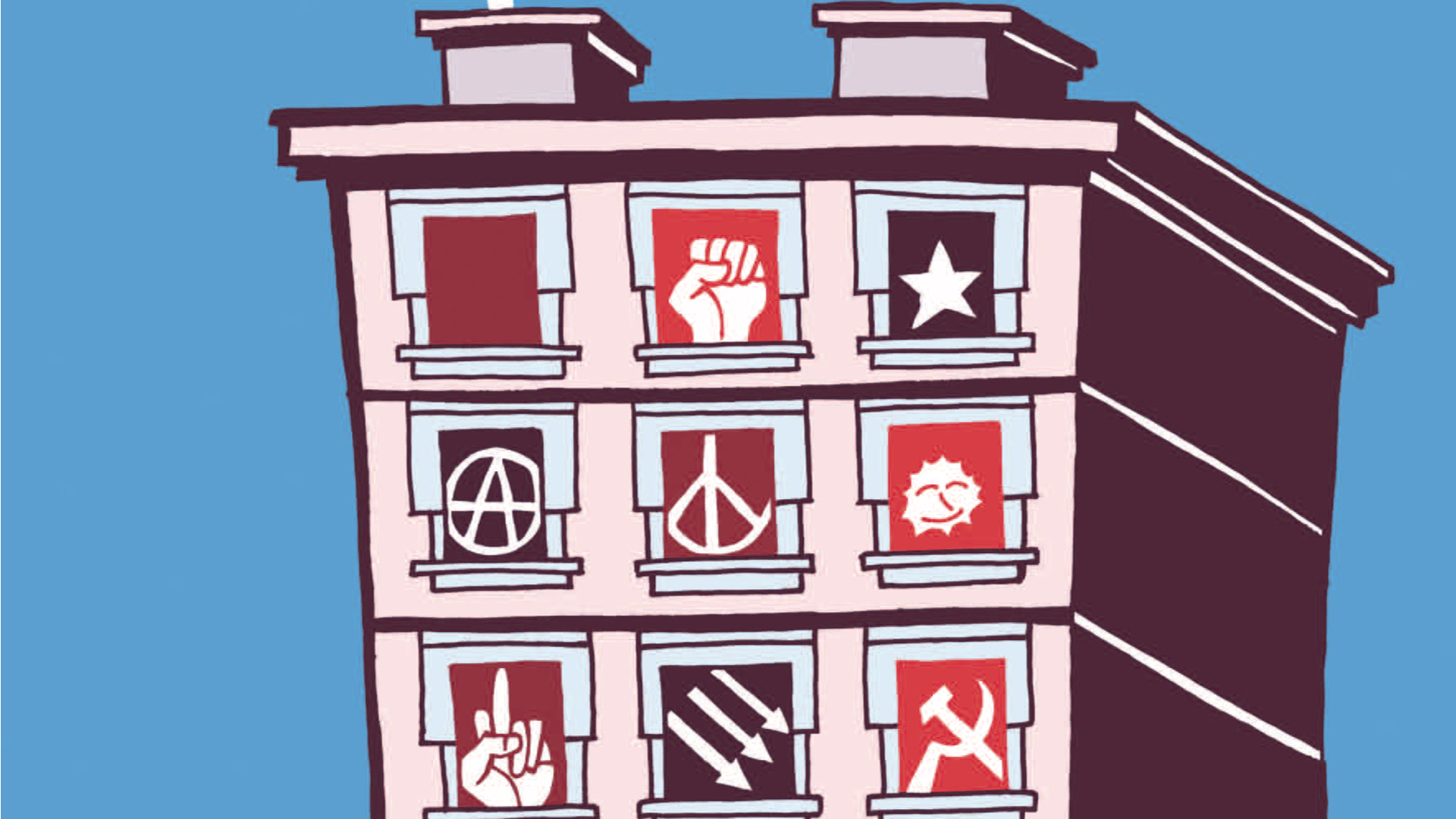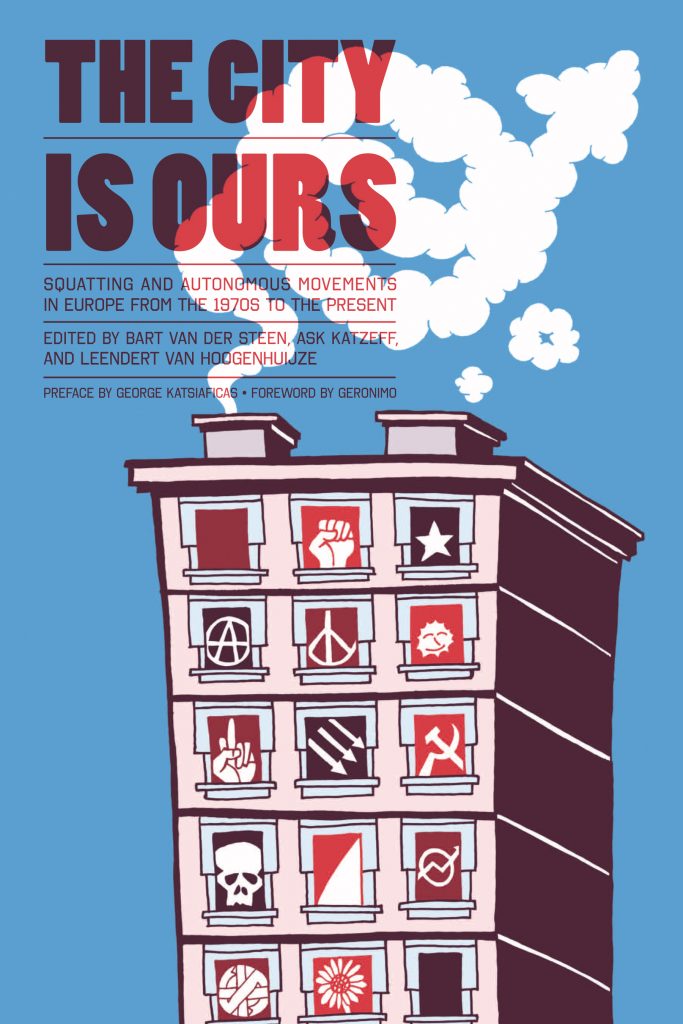By A. Iwasa
More Thoughts Zine & Slingshot Magazine
The City is Ours begins with a preface by George Katsiaficas, who I consider to be the next Noam Chomsky. Though he is an academic, I feel like he has long overcome that world’s tendency towards dry writing.
The foreword was written by Geronimo, the author of Fire and Flames, a history of the German Autonomist Movement,. Though he is as passionate as he is in his earlier writings, a diatribe against anti-sexism almost completely derailed my train of thought as I read his foreword.
That written, this book starts off strong before calming down to a more nuanced, academic feeling with the introduction.
I was reading the book with a real sense of urgency, having recently become involved with the squatters’ and squat supporters’ collective, East Bay Homes Not Jails. After living in two squats that had been evicted in Oakland the previous year, I was ready to look just about anywhere for advice. The subtitle of the book should be stressed, this isn’t just about squatting, it’s also very much about European Autonomist Movements.
But it was well worth working through all the historical context to get to the actual material about squatting.
The chapter on Brighton was one of the major highlights, written by two groups, one explicitly of squatters, the Needle Collective. It’s exactly the sort of writing I was hoping for when I got the book. Though the post-World War II emergence of squatting in Britain and general historical context is touched on, this is mostly a fiery account of squatting in Brighton from 1969-2012.
An interesting side note to the mostly academic writing style of the book was the amount of documentary film footage referenced, much of which I was able to find on the youtube! Taking breaks from reading to watch some of these videos reminded me of history classes in high school big time, but far more interesting. This could make a fun Squatting 101 textbook and study guide! Possibly the best of these films was 69, about a Youth House, Ungdomshuset in Copenhagen.
The chapter on London was written by a Lecturer in Law, Lucy Finchett-Maddock. Though the emphasis on her specialty comes off as dry at first, the flip of it is she also focuses on the political organizations of the squatters, even going back to the Ex-Servicemen’s Secret Committee, who were one of the many groups helping homeless families get into squats in the post-World War II wave.
As a participant in East Bay Homes Not Jails, these sort of organizational forms were some of the specific things I was hoping to learn more about.
The next chapter is about the Rozbrat squatted social center in Poznan, Poland. Being the only chapter about what I consider to be Eastern Europe, I particularly enjoyed it on several levels. How the emergence of the Polish squatting movement fit into the post-State Communist era, and how Rozbrat in particular also fit into the Anti-Globalization Movement was fun and exciting to read.
As a participant in the Infoshop Movement with many white relatives of Slovak descent, there was something homey feeling about this chapter for me. There was even a reference to Anarchist Soccer!
The final chapter, Squatting and Autonomous Action in Vienna, 1976-2012, is solid. The whole book, for the most part, should probably be called Autonomous Action and Squatting. In some ways, this book is more like what I had hoped Fire and Flames and The Subversion of Politics would have been like: an exciting, well written and researched history of Autonomists. But it wasn’t as full of helpful advice on squatting as I hoped it would be. Still well worth reading and discussing for what it is.
Back to Bart van der Steen’s Editor Page |Back to Ask Katzeff’s Editor Page | Back to Leendert van Hoogenhuijze’s Editor Page | Back to George Katsiaficas’s Author Page | Back to Geronimo’s Author Page







